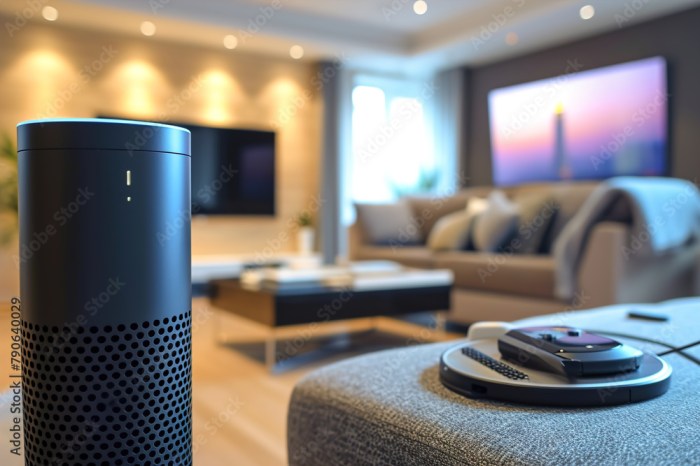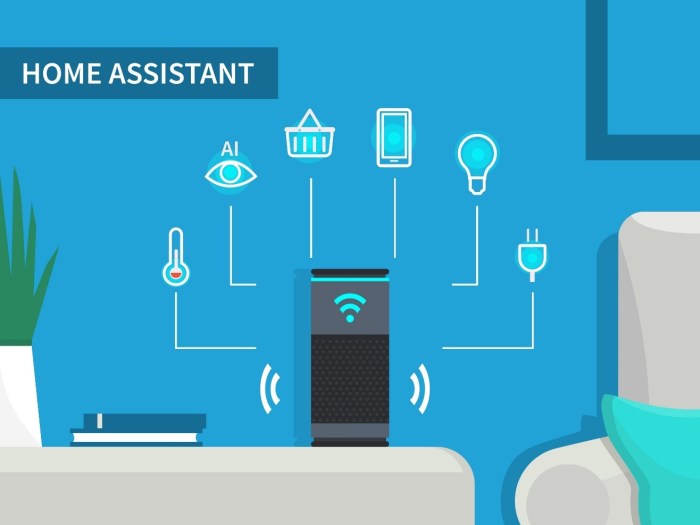How to Control Your Entire Home with Voice Commands is revolutionizing the way we interact with our living spaces. Imagine walking into your home and effortlessly adjusting the lights, temperature, and security systems just by speaking. This technology has evolved rapidly, transforming how we manage our households and offering unprecedented convenience and efficiency. In this guide, we’ll explore the essential components of voice control in home automation, from the devices you need to the benefits they provide.
Introduction to Voice Control in Home Automation: How To Control Your Entire Home With Voice Commands
Voice control in home automation refers to the technology that allows users to interact with various smart devices using spoken commands. This functionality has transformed the way we manage our homes, making it easier and more convenient to perform everyday tasks. Over the years, voice technology has evolved from simple command recognition to sophisticated systems that understand context, preferences, and even natural language. This evolution has significantly impacted household management by enabling users to control lighting, temperature, security, and entertainment systems effortlessly with their voices.
The key benefits of controlling your home through voice commands include improved convenience, enhanced accessibility for individuals with disabilities, and increased energy efficiency. With just a few words, you can adjust your thermostat, turn on lights, or even lock your doors, making daily routines smoother and less time-consuming.
Essential Devices for Voice Control

To fully harness the power of voice control, several essential smart devices can be employed. These devices include:
- Smart Speakers: Devices like Amazon Echo, Google Nest, and Apple HomePod serve as the central hub for your voice-controlled system, allowing you to give commands to various connected devices.
- Smart Lights: Brands such as Philips Hue and LIFX offer lights that can be controlled via voice commands, enabling you to set the mood effortlessly.
- Smart Thermostats: Devices like the Nest Learning Thermostat allow you to control your home’s heating and cooling through voice, optimizing energy usage.
- Smart Locks: Smart locks from brands like August and Schlage can be locked or unlocked using voice commands, enhancing security and convenience.
Compatibility between these devices and voice assistants is crucial for seamless integration. Most major smart home products are designed to work with popular voice assistants like Amazon Alexa, Google Assistant, and Apple Siri. A central hub is also important, as it facilitates communication between your voice assistant and smart devices, ensuring they all respond to your commands.
Setting Up Your Voice-Controlled Home

Setting up a voice assistant in your home involves a few straightforward steps. Start by choosing the right voice assistant for your needs—be it Alexa, Google Assistant, or Siri.
Here’s a step-by-step guide to connecting smart devices to your voice assistant:
- Choose a Voice Assistant: Select the assistant that best fits your lifestyle and device compatibility.
- Install the Companion App: Download the app associated with your voice assistant on your smartphone.
- Connect Your Smart Devices: Follow the app instructions to add compatible smart devices to your network.
- Set Up Voice Commands: Create voice commands through the app to control your devices easily.
- Test Your Setup: Ensure everything is working by performing various commands.
The configuration process may vary for different devices, but most will require you to follow similar steps through their respective applications.
Voice Commands for Home Management

Voice commands can simplify various home functions significantly. Common commands include:
- Lighting: “Turn on the living room lights,” or “Dim the bedroom lights to 50%.”
- Temperature: “Set the thermostat to 72 degrees.”
- Security: “Lock the front door,” or “Show me the front door camera.”
Creating custom voice commands personalizes your home experience. Most voice assistants allow you to tweak and define specific phrases that resonate with your routine. Furthermore, routines can be established to automate multiple commands with a single phrase. For instance, saying “Goodnight” can turn off all lights and set the thermostat to a comfortable sleeping temperature.
Enhancing Security with Voice Commands, How to Control Your Entire Home with Voice Commands
Voice control can significantly enhance your home security systems. You can implement various voice commands to monitor and control devices like cameras and alarms.
For example, you might say, “Activate the security system,” or “Show me the living room camera,” to ensure your home is safe. It is also vital to follow best practices for maintaining privacy and security when using voice commands. This includes regularly updating passwords, utilizing two-factor authentication where available, and being mindful of the information shared with voice assistants.
Troubleshooting Common Issues
While using voice control, users may encounter several common issues. Here’s a troubleshooting guide for connectivity problems:
- Device Not Responding: Ensure the device is plugged in and connected to your Wi-Fi network.
- Voice Recognition Issues: Speak clearly and ensure the microphone of your smart speaker is unobstructed.
- Compatibility Problems: Verify that your devices are compatible with your chosen voice assistant.
To optimize performance, regularly update your device software and perform voice training exercises available in the voice assistant app.
Future Trends in Voice Control Technology
Emerging technologies are set to revolutionize voice control and smart home integration further. Innovations such as improved natural language processing, machine learning algorithms, and enhanced speech recognition capabilities are on the horizon. These advancements could lead to voice assistants that understand context better and anticipate user needs.
For instance, future voice assistants may be able to learn household patterns over time, adjusting settings automatically as per the user’s routine. Predictions suggest that by 2030, voice control will be integrated into even more devices, such as appliances, furniture, and vehicles, creating a fully interconnected smart ecosystem that responds seamlessly to our commands.
Last Recap
In conclusion, mastering voice commands to control your home opens up a realm of possibilities for a smarter living environment. Not only does it streamline daily tasks, but it also enhances home security and personalization. As technology progresses, staying informed about the latest trends will empower you to make the most of your voice-controlled systems, ensuring your home is not just smart but also safe and connected.